Sports
/ArcaMax
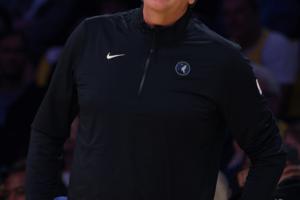
Timberwolves pull away from Magic, inspired by another splashy Anthony Edwards moment
ORLANDO, Fla. — Put another dunk on Anthony Edwards’ highlight reel.
In the third quarter of the Timberwolves’ 104-89 victory over the short-handed Magic on Thursday, Edwards took flight from the left side of the lane as Orlando’s Anthony Black came over to defend.
Black was unsure whether he wanted to challenge Edwards or get out of ...Read more
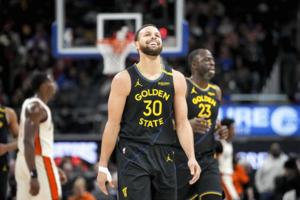
Even depleted, Warriors get right with tight win at Pistons
DETROIT — After two straight disastrous showings against the Kings and Heat, the Warriors’ effort was in question for the first time all year. Head coach Steve Kerr called it a “crisis of confidence.” He needed to see more “competitive spirit.”
Even short five rotation players, the Warriors played with the type of urgency they’d ...Read more
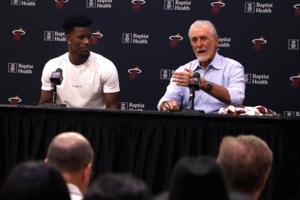
More background on Jimmy Butler's suspension; Pat Riley on players: 'render unto the Heat'
SALT LAKE CITY — On the day an interview with Miami Heat President Pat Riley dropped regarding dealing with player empowerment, more clarity emerged about the ongoing team suspension of forward Jimmy Butler.
Amid the unpaid seven-game suspension of Butler, an NBA party familiar with the process offered background on the ongoing stalemate that...Read more
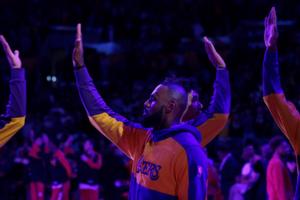
Thursday's Lakers home game against Hornets postponed due to L.A. County wildfires
LOS ANGELES — The Lakers' game against the Charlotte Hornets scheduled for Thursday has been postponed because of the continuing wildfire crisis in Los Angeles County, the league and team announced.
The game, which was slated to tip off at 7:30 p.m. at Crypto.com Arena, will be rescheduled at a later date. Tickets for Thursday's game will be ...Read more
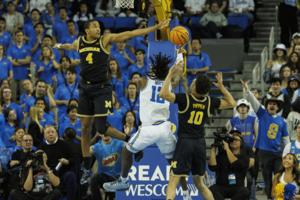
Dylan Hernández: UCLA coach Mick Cronin rips his players, a controversial move that has sparked wins
LOS ANGELES — UCLA coach Mick Cronin sounded exasperated as he cataloged his team's crimes against his brand of basketball, pointing out his players didn't play defense and allowed their opponents to push them aside to collect rebounds. The details he recalled during his 10-minute postgame news conference were intended to support an ...Read more
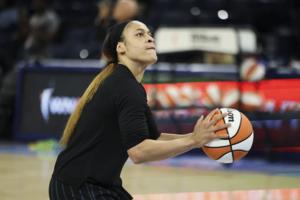
Bring back Chennedy Carter? A Courtney Vandersloot reunion? 6 players the Sky could target in free agency.
CHICAGO — It’s almost time for the Chicago Sky to be back on the clock for improving their roster.
The Sky will enter the first stage of free agency Saturday — a nine-day window of extending qualifying offers to restricted free agents — that will set the tone for the rest of their offseason roster construction. And with plenty of cap ...Read more
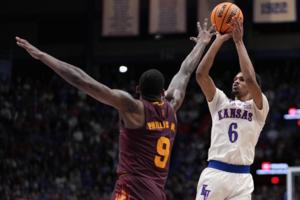
Kansas, down at halftime, rallies for win vs. Arizona State
LAWRENCE, Kan. — Kansas Jayhawks guard Shakeel Moore has a knack for big plays.
That was on display Wednesday night against Arizona State. Moore stole the ball on an inbound Sun Devils pass and threw down a ferocious dunk on the other end of the floor. The Allen Fieldhouse crowd roared and gave Moore a standing ovation.
That bucket, one of...Read more
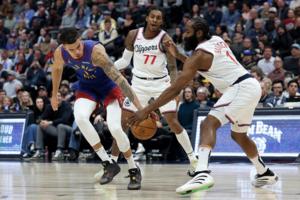
Nuggets trounce Clippers without Nikola Jokic, Aaron Gordon thanks to variety of contributors
DENVER — The Nuggets have experience beating the Los Angeles Clippers without Nikola Jokic.
They pulled it off in Los Angeles last season, led by Reggie Jackson’s stirring 35-point, 13-assist performance. Jamal Murray and Aaron Gordon were also absent from that game, which was memorable enough for coach Michael Malone to reminisce on ...Read more
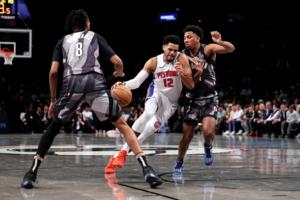
Pistons' win streak reaches five with 113-98 victory vs. Nets
Malik Beasley has never been shy about shooting. He began the year as one of the league's best 3-point shooters, connecting on 41.1% of his shots during the first 28 games. However, Beasley experienced a drop-off in his percentage, shooting 34.6% from behind the arc over the last eight games.
But Wednesday night against the Brooklyn Nets, ...Read more
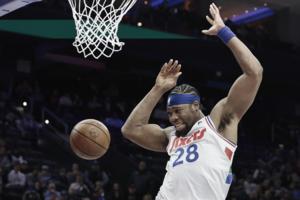
Tyrese Maxey, Guerschon Yabusele fuel Sixers' 109-103 win over Wizards
PHILADELPHIA — The product inside the Wells Fargo Center on Wednesday was the effects of load management, injuries and tanking.
The contest was exciting. But the 76ers and Washington Wizards were both shells of themselves in a game far from the NBA standard. It will go down as a 109-103 victory that improved the Sixers to 15-20.
Tyrese Maxey...Read more

Knicks snap 3-game losing streak with 112-98 win vs. Raptors
NEW YORK — Streak snapped. New York is back in the win column.
And just in time, because things are about to heat up at Madison Square Garden. The Knicks are set to host six consecutive teams projected to qualify for the playoffs, a grueling stretch that will test their depth.
The Toronto Raptors aren’t a playoff-bound group and the Knicks...Read more

Noah Clowney's career night not enough as Nets lose 3rd straight to surging Pistons
NEW YORK — A recent onslaught of trades, injuries and illness has only made Year 1 more difficult for Jordi Fernandez and his staff. But even as the Brooklyn Nets shamelessly tank, it’s difficult to write them off on most nights. Regardless of available personnel, if they have a pulse, Fernandez usually has them ready to play.
Brooklyn was ...Read more

Comeback bid comes up short as UConn has 8-game winning streak snapped at Villanova, 68-66
VILLANOVA, Pa. — The ninth-ranked UConn men’s basketball team saw its eight-game winning streak snapped in a 68-66 loss in Villanova’s on-campus Finneran Pavilion Wednesday night.
Alex Karaban stared into a wall of opposing fans in the snug, 6,500-seat arena as he went to the free-throw line with a chance to give UConn a lead with three ...Read more
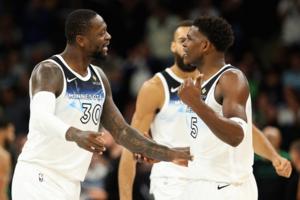
Timberwolves coach Chris Finch keeping Julius Randle in starting lineup
NEW ORLEANS — This week, when Chris Finch made a change to his starting lineup, he substituted Donte DiVincenzo in at point guard for Mike Conley. Staying in the starting lineup, perhaps to the chagrin of a portion of Timberwolves fans, was Julius Randle.
Those hoping that Finch might not stop with the Conley-DiVincenzo swap should read what ...Read more
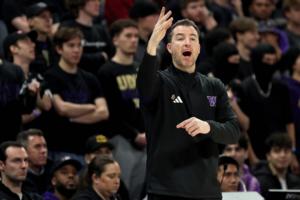
Mike Vorel: Are UW men ready for a relentless Big Ten stretch? 'It's coming.'
SEATTLE — There are no shortcuts to calluses.
They are, by nature, not easily earned — formed through friction and blisters and blood. They can’t be bought or borrowed. They are tangible evidence of resistance and resolve, of axes swung and tunnels dug through miles of rock and mud. The calluses on your hands and feet are rigorous ...Read more

Dwight Howard claims Adam Silver called him after he tweeted 'Free Palestine'; NBA says that's 'categorically false'
NEW YORK — Dwight Howard says he received a call from NBA commissioner Adam Silver almost immediately after he tweeted “Free Palestine” more than a decade ago — a claim the league denies.
The controversy occurred in July of 2014, when Howard was a member of the Houston Rockets.
“Less than 10 minutes after I tweet that, I get a call ...Read more
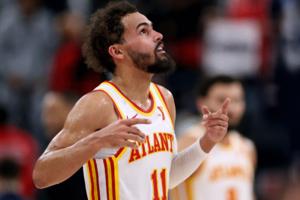
A closer look at Hawks guard Trae Young's buzzer-beater against the Jazz
SALT LAKE CITY — All Atlanta Hawks guard Trae Young needed was a little bit of time.
Jazz guard Collin Sexton nailed a 3-point shot after Hawks guard Dyson Daniels broke up Utah’s original plan to drive inside the paint. But Young didn’t bat an eye at Sexton tying the score at 121-121 with 2.9 seconds left on the clock. He signaled for ...Read more

Michael Cunningham: 'Big-time win' over Kentucky signals Georgia could finally join March Madness
ATHENS, Ga. — Georgia men’s basketball had its best 13-game start in 94 years. That didn’t impress the Net rankings, the metric that the NCAA uses to pick and evaluate the tournament field. This dominant victory over No. 6 Kentucky should move the needle.
The Wildcats came to Stegeman Coliseum on Tuesday and discovered that the Bulldogs ...Read more
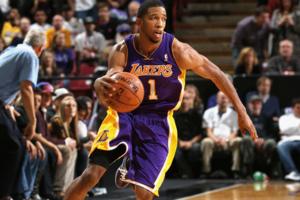
Late Laker Darius Morris' dad, brother sentenced to prison for money order thefts of $5 million
LOS ANGELES — The father and brother of Darius Morris, a former Lakers and Clippers guard who died at age 33 in May, were sentenced Wednesday to federal prison for stealing up to $5.1 million worth of U.S. Postal Service money orders.
Dewayne Morris Jr. was sentenced to 12 years, and his father, Dewayne Morris Sr., to seven years. They were ...Read more
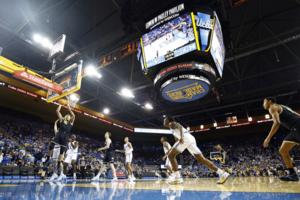
Career-best nights by Goldin, Donaldson power Michigan past No. 22 UCLA
Three days after handing USC a loss as a welcome gift to the Big Ten, Michigan did the same with UCLA.
Behind career nights from Vlad Goldin and Tre Donaldson, the No. 24 Wolverines completed a Los Angeles sweep and remained atop the league standings with a 94-75 win over the No. 22 Bruins on Tuesday at Pauley Pavilion.
Goldin poured in a ...Read more
Popular Stories
- Dylan Hernández: UCLA coach Mick Cronin rips his players, a controversial move that has sparked wins
- Mike Vorel: Are UW men ready for a relentless Big Ten stretch? 'It's coming.'
- Tyrese Maxey, Guerschon Yabusele fuel Sixers' 109-103 win over Wizards
- Knicks snap 3-game losing streak with 112-98 win vs. Raptors
- Pistons' win streak reaches five with 113-98 victory vs. Nets





